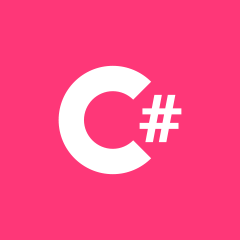手动填充 C# 数据类型集合列表
我正在编写一个 C# 示例来学习列表以及如何初始化它们。所以我有一个具有一些属性的类:
public class C1
{
public string p1 { get; set; }
public string p2 { get; set; }
public List<StatusChoices> ChoiceList { get; set; }
...
public string FillList(string v1, int v2, bool v3)
{
// How can I fill this.ChoiceList?
this.ChoiceList.val1 = v1; //Is this possible?
return this.ChoiceList.val1;
}
}
public class StatusChoices
{
public string val1 { get; set; }
public int val2 { get; set; }
public bool val3 { get; set; }
}
这可能很容易,但到目前为止我无法实现。如何“手动”将一些值添加到列表中?
 慕的地6264312
慕的地6264312浏览 236回答 3
3回答
-

慕仙森
将ChoiceList被初始化为null类时C1被创建。(事实上,每个类字段,包括隐藏的属性支持字段,都被初始化为其默认值。)您必须显式创建列表对象。您可以在类构造函数中这样做public class C1{ ... public List<StatusChoices> ChoiceList { get; set; } public C1() // Constructor. Is run when a new C1 object is created with `new`. { ChoiceList = new List<StatusChoices>(); } ...}创建后,此列表为空。您必须向其中添加元素:public string FillList(string v1, int v2, bool v3){ ChoiceList.Add(new StatusChoices{ val1 = v1, val2 = v2, val3 = v3 }); return v1;}请注意,您还必须创建一个StatusChoices对象。您可以将类视为可用于创建对象的模板。将对象添加到列表后,可以通过枚举访问它们foreach (StatusChoices sc in ChoiceList) { Console.WriteLine($"val 1 = {sc.val1}, val 2 = {sc.val2}, val 3 = {sc.val3}")}或通过索引StatusChoices first = ChoiceList[0];StatusChoices second = ChoiceList[1];string v1_of_first = first.val1;string v1_of_second = second.val1;您还可以直接访问元素的属性string v1_of_first = ChoiceList[0].val1;string v1_of_second = ChoiceList[1].val1;如果你有一个对象C1 c1 = new C1();,你可以写string v = c1.ChoiceList[0].val1;你甚至可以构造一个C1对象列表var mainList = new List<C1>(); // The var-keyword lets C# infer the type. // This saves you from writing List<C1> again.mainList.Add(new C1());mainList.Add(new C1());mainList.Add(new C1());mainList[0].FillList("a", 12, true);mainList[0].FillList("b", 33, false);mainList[1].FillList("x", 77, true);...string v = mainList[1].ChoiceList[2].val1;我曾经ChoiceList.Add(new StatusChoices{ val1 = v1, val2 = v2, val3 = v3 });在列表中添加一个新元素。这是一个简短的版本StatusChoices sc = new StatusChoices();sc.val1 = v1;sc.val2 = v2;sc.val3 = v3;ChoiceList.Add(sc);简短版本使用对象初始值设定项{ val1 = v1, ... }。 -

HUX布斯
像这样的东西public string FillList(string v1, int v2, bool v3){ this.ChoiceList = new List<StatusChoices> { new StatusChoices { val1 = v1, val2 = v2, val3 = v3, } }; return this.ChoiceList[0].val1;} -

德玛西亚99
只需创建 StatusChoices 类的一个实例,对其进行初始化并将其添加到列表中。(我添加了列表的延迟初始化)public class C1{ public string p1 {get; set; } public string p2 {get; set; } public List<StatusChoices> ChoiceList { get; set; } ... public string FillList(string v1, int v2, bool v3){ if(ChoiceList == null) { this.ChoiceList = new List<StatusChoices>(); } var newItem = new StatusChoices {val1 = v1, val2 = v2, val3 = v3}; this.ChoiceList.Add(newItem); return newItem.val1; }}
 随时随地看视频慕课网APP
随时随地看视频慕课网APP
相关分类



 C#
C#